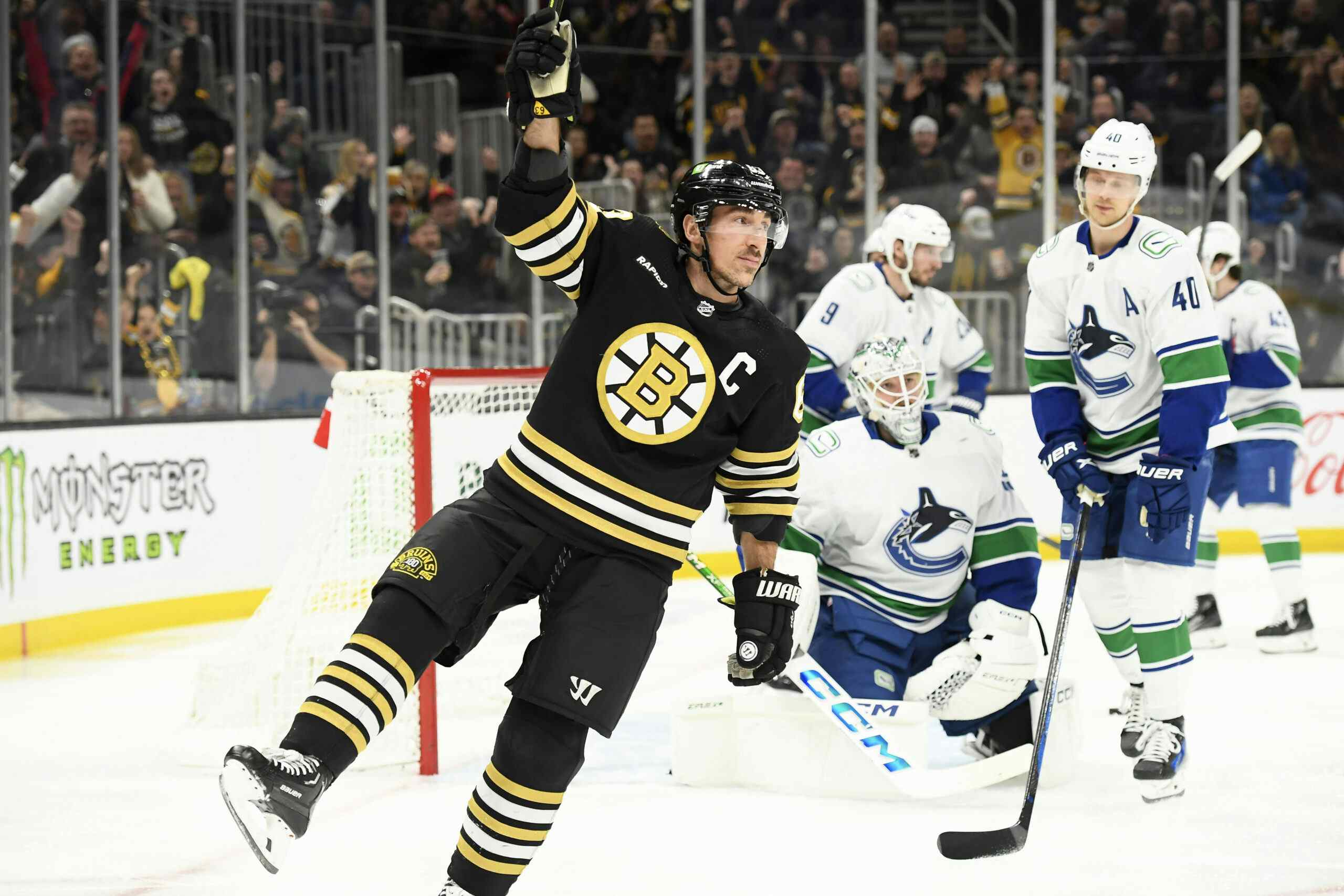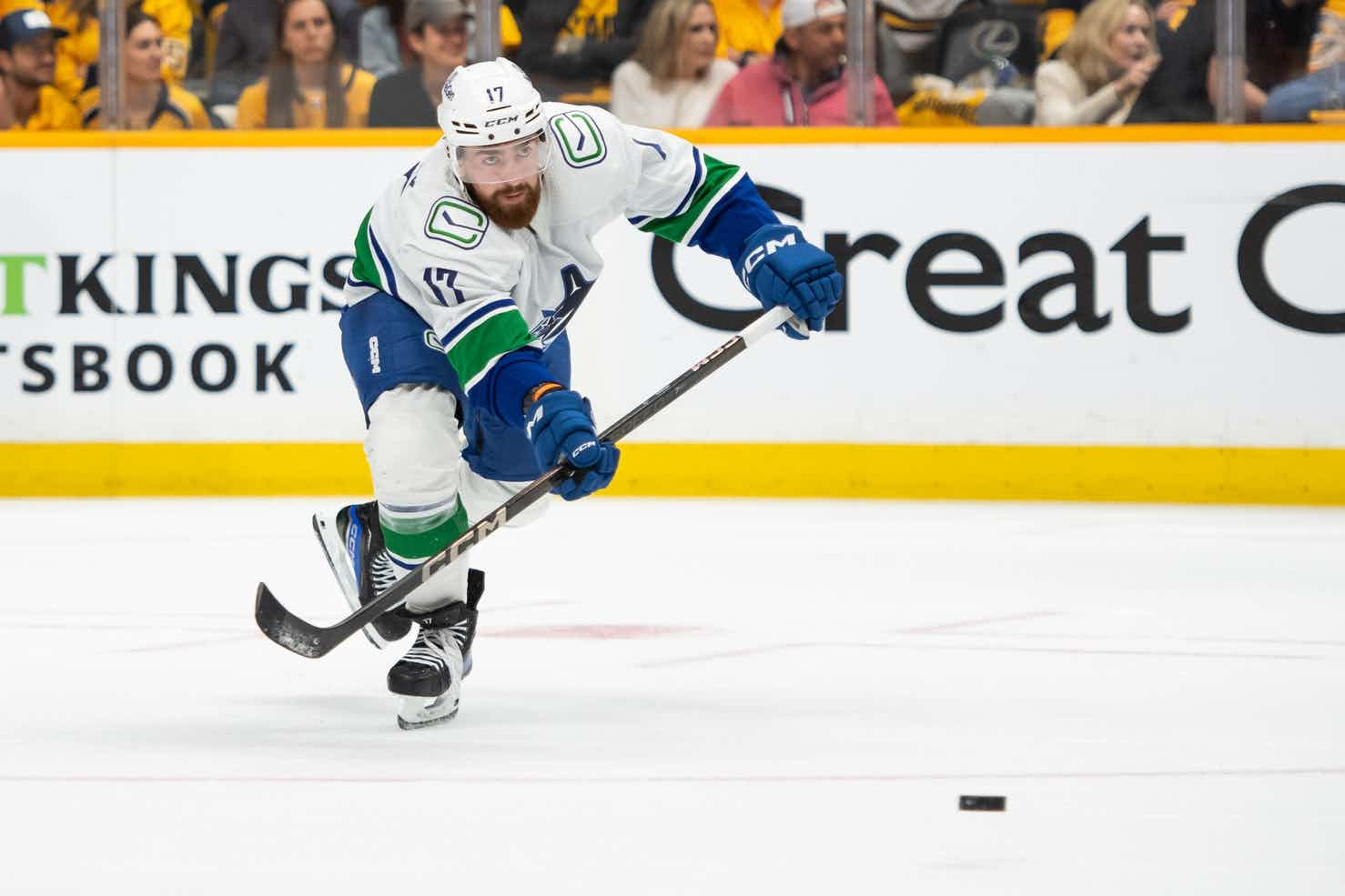Canucks’ Deadline Moves Are Symptomatic of an Organization That Lacks Direction

6 years ago
The Vancouver Canucks are a ship without a rudder; lost at sea, drifting aimlessly in the wind, and captained by a man who prays to God the ship washes up on the shores of friendly territory.
What other conclusions could you possibly come to after analyzing the organization’s moves over the last week?
First, the Canucks locked up a bottom-pairing defenceman in Erik Gudbranson to a three-year deal that will pay him 12 million dollars and expire as he’s nearing 30-years-old. This had a two-pronged effect. Not only did they attach more money and term to a sunk cost, but they also kissed their best tradeable asset at this year’s deadline goodbye.
With Gudbranson off the market, that meant the team’s most valuable trade chip became Thomas Vanek. Vanek went to Florida for a pick last season, and many fans had hoped the Canucks could fetch a similar return to the one Detroit managed just one year ago.
Instead, they ended up with Tyler Motte and a negative value asset in Jussi Jokinen. Depending on how you look at it, that’s either an indictment of the team’s negotiating skills or of the talent they’ve brought in over the past few seasons.
They also acquired Brendan Leipsic in what could be described as a great deal in a vacuum, but one that really does nothing to move the needle for them in the big picture.
Now, there’s nothing wrong with taking bets on Leipsic and Motte. One could even argue Leipsic is precisely the type of bet worth taking for a team that is ostensibly rebuilding.
But when you take a big picture outlook, there are a couple of problems.
The Canucks, by even the most generous predictions, need at least another two seasons before they’ll look like a team that can win a playoff round.
Leipsic will be 24 this May. Motte is a stone’s throw away from turning 23. Both players will require waivers at some point next season. They aren’t a few years away. They were acquired to help the team in the here and now, and if they aren’t contributing next season.
By any reasonable measure, the ceiling on Motte and Leipsic is a pair of middle-six wingers. They’ll be approaching 26 and 27 respectively by the time the team is competitive, and again, that’s being generous.
26 and 27-year-old players aren’t cost-controlled. They get paid, which means that the most significant potential value these players have will have been squandered by the time the team enters their competitive window. This is just one of the reasons many in this market would have preferred to see the team go after picks: not only would a potential future NHL’er from the 2018 draft be peaking at around the same time as players like Elias Pettersson and Olli Juolevi, they’d also still be on entry-level contracts or second contracts.
There’s also the question of upside. It’s undeniable that players like Motte on average have a better chance of turning out than your average mid-to-late round pick. But to borrow an analogy from Jason Hamilton, these players are like Scratch & Win tickets, whereas draft picks are like playing the Powerball. A Scratch & Win may pay out more often, but that’s because you’re usually getting $5 or another free ticket when you win. Your chances of winning the Powerball are much lower, but if you get lucky enough, you can become a multi-millionaire overnight. (Or, in hockey terms, you can land the next Johnny Gaudreau or Jamie Benn.)
The Canucks should be targeting draft picks for a myriad of reasons, many of which have been discussed at length by CanucksArmy in the past. The refrain that Jim Benning is supposedly a master at the draft table but doesn’t seem to like draft picks has been expressed ad nauseam in this market, but it bears repeating. The Canucks’ best asset is their amateur scouting, their pro scouting has been spotty at best; and in almost every draft, at least one bonafide cornerstone player slips through the cracks into the late rounds. The more picks you have, the better your chance of landing that player. Sure, there’s a greater chance your fifth round pick doesn’t even turn into Motte, but rebuilding teams don’t get anywhere by being conservative. At some point, you have to swing for the fences.
That’s assuming picks were ever on the table, though. And if you believe the Canucks, that wasn’t the case. The statements made by management after the deadline passed were clear as day: the team wasn’t offered a draft pick for Vanek. Given the talking points Linden and Benning had stuck to leading up to the deadline, it’s entirely believable. The message seemed to be that the team wasn’t going to be aggressively shopping any pieces, and would instead be taking calls and listening to offers. Therein lies the problem: you’re allowed to ask for things. That’s how negotiations work. It’s not unreasonable to suggest the team could have had a better return for Vanek if they had been more aggressive in targeting that return.
What’s equally possible is that the Canucks track record with trades under the Benning-Linden regime has undermined their efforts at the negotiating table.
From the most recent edition of Jason Botchford’s Provies:
This was Benning last week:“We want to do hockey trades. We have some UFAs to see if there’s interest in them and the point I was trying to make is there a hockey trade to be made for somebody with size and strength, who can play in our top nine.”OK, fair enough.But consider this question:If Benning announces to the NHL the Canucks are looking for hockey trades, why the hell would any team offer a draft pick?Take CBJ.If you show your cards and say you want hockey trades, and CBJ knows you have a history of taking 22-23 year old players, of course they’re going to play hardball with this knowledge.Of course they’re going to say, here’s the player, take him or leave him.And if you really want him, you have to take Jussi too.
The return on the Vanek deal looks even worse when you consider the team’s messaging after their deadline debacle two years ago. Wasn’t the whole point of refusing to take a lukewarm return on Dan Hamhuis so that the team wouldn’t get lowballed in the future?
At this point, it’s fair to ask: what the hell is this team’s plan? There’s mounting evidence to suggest it’s to continue to try and be competitive in the short-term. Signing Loui Eriksson; re-signing Gudbranson. And now, trading your best chip for a plug-and-play AHL/NHL tweener and the corpse of Jussi Jokinen.
Take an honest look at the moves the team has made over the past four years. Sure, the drafting has been good, but there are far more moves that say “we’re trying to compete now” than “we’re building for the future.” That should be a big red flag at this stage. The Canucks are en route to their third straight bottom-five finish — any attempts to stay competitive have been an abject failure.
In a vacuum, many of the moves the Canucks have made in recent memory are entirely defensible. Acquiring players like Motte and failing to target draft picks in trades won’t make or break anybody. But when a team has spent three seasons in the toilet, they have to do better than a handful of reclamation projects. The constant emphasis put on these types of assets isn’t the root of their problems, but it’s symptomatic of a larger issue: the Canucks don’t seem to know what their long-term goal is.
They have players coming. Pettersson looks to be the real deal. Juolevi could be a cornerstone in the team’s top four for years to come. Kole Lind, Jonathan Dahlen, and Adam Gaudette could form the nucleus of an effective middle-six group. Only time will tell.
A rudderless ship that hasn’t set a course can still wash up somewhere beautiful.
But it’s far more likely it sinks long before the crew can even see land.





